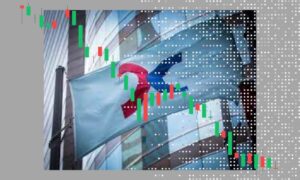
A team of data-science consultants has launched an analytics business in Sydney to help banks and buy sides make better sense of their trading algorithms – and prepare for the eventual introduction of generative artificial intelligence onto the floor.
Cat Turley, founder and CEO of ExeQution Analytics, says equities desks continue to struggle with making sense of data, even as it has become the vital ingredient to developing quantitative models and execution algos.
“Organizations face the high cost of data and difficulty in getting the most value from it,” Turley said.
Sell-side bank desks all have access to the same kind of data, and they all have clever data scientists. They’re in a race to differentiate themselves in order to win client orders.
One way to do that is to offer transparency into their algorithms, but this requires a degree of attribution that is difficult for many firms to achieve.
“Sell sides are under pressure to differentiate by, for example, integrating a volatility forecast model into your algo wheel, instead of just programming it to ‘beat VWAP by 3 bips’,” she said. (VWAP means volatility weighted average price; it’s one of several generic benchmarks that equity traders strive to beat.)
Explaining the box
Buy sides have the reverse challenge: how to make sense out of the myriad bank execution algos, and determine which broker is adding value. Institutional investors often require their fund managers now have visibility into a broker’s algo, so buy-side traders can’t accept a bank’s ‘black box’ solution. They have to be able to unpack it.
Buy or sell side, these capabilities have to integrate into the trading desk, how the quants do their jobs, and into post-trade processes such as transaction-cost analysis.
This becomes especially important as macro conditions change, particularly with continued hikes in interest rates. Good models don’t just rely on historic data, but combine it with real-time events to help traders get a view of where stock prices or volatility could move.
Turley says this is especially challenging in Asia Pacific, where desks must understand how their vendors operate across multiple exchanges and trading venues.
From machine learning…
Banks and buy sides have incorporated machine learning into their algo development for years. The goal has been to develop quant models that predict market movements.
A model in machine learning is the output of a learning algorithm run on a dataset. Trading desks train the model using their algos, and if the model seems to work well, then it informs how execution algos are written.
A typical trading desk creates a feedback loop: a quantitative scientist develops a model, which an algo developer uses to create trading tools, which the trader deploys, their performance runs through TCA or another form of execution analysis, and the quant pores through the results looking to tweak the model.
Generative AI is likely to play a role on trading desks, although institutions have yet to work out the guardrails to ensure it’s used safely.
…to Generative AI?
“It won’t be used to automate trading but it can help with access to information,” Turley said. Traders are constantly banging away on a keyboard to pull up pending orders, searches for liquidity, measuring volatility in a market or on a basket of stocks. They already have data feeds for real-time and historical data, but could use language-learning models (such as ChatGPT) to source that information quickly and intuitively, as well as to visualize it.
“The industry will develop this but there are security issues that can’t be ignored,” Turley said. “We’re talking with technology partners about where this will evolve to.”
However banks and buy sides integrate GenAI into their machine-learning processes, the goal will be to better integrate historic and real-time data to understand what is contributing to performance (or lack thereof), in greater detail, in order to improve future decisions – in a repeatable fashion that banks and investors can decipher.
This requires both a basic handle on data itself, as well as the ability to stitch together systems across markets so the data is optimized, which is ExeQution’s pitch.
Turley is a veteran of data analytics in financial services. From a data vending background, she went on to set up and run data analytics at firms including J.P. Morgan, CIMB, RBS and Haitong Securities. She decided to launch her own business in this space, leveraging her career’s experience.
ExeQution launched in June self-funded by Turley, and now has five employees in Sydney and a coverage person in Hong Kong.
- SEO Powered Content & PR Distribution. Get Amplified Today.
- PlatoData.Network Vertical Generative Ai. Empower Yourself. Access Here.
- PlatoAiStream. Web3 Intelligence. Knowledge Amplified. Access Here.
- PlatoESG. Carbon, CleanTech, Energy, Environment, Solar, Waste Management. Access Here.
- PlatoHealth. Biotech and Clinical Trials Intelligence. Access Here.
- Source: https://www.digfingroup.com/exeqution/
- :has
- :is
- :where
- ][p
- $UP
- a
- ability
- Able
- About
- Accept
- access
- Achieve
- across
- adding
- AI
- ALGO
- algorithm
- algorithms
- All
- already
- Although
- an
- analysis
- analytics
- and
- Another
- ARE
- artificial
- artificial intelligence
- AS
- asia
- asia pacific
- At
- automate
- average
- away
- background
- Bank
- Banks
- basic
- basket
- BE
- become
- becomes
- been
- benchmarks
- Better
- both
- broker
- business
- but
- buy
- Buy-Side
- by
- CAN
- capabilities
- ceo
- challenge
- challenging
- change
- ChatGPT
- CIMB
- client
- combine
- conditions
- constantly
- consultants
- continue
- continued
- contributing
- Cost
- could
- coverage
- create
- creates
- data
- Data Analytics
- decided
- Decipher
- decisions
- Degree
- deploys
- desk
- Desks
- detail
- Determine
- develop
- Developer
- developing
- Development
- develops
- differentiate
- difficult
- Difficulty
- do
- Dont
- employees
- ensure
- Equities
- equity
- especially
- Even
- events
- eventual
- evolve
- example
- Exchanges
- execution
- experience
- Face
- Fashion
- feedback
- financial
- financial services
- firms
- five
- Floor
- For
- Forecast
- form
- founder
- Founder and CEO
- from
- fund
- fund managers
- future
- generative
- Generative AI
- get
- getting
- goal
- good
- greater
- Haitong
- handle
- Have
- help
- her
- High
- Hikes
- historic
- historical
- Hong
- Hong Kong
- How
- How To
- HTTPS
- if
- important
- improve
- in
- Including
- Incorporated
- industry
- information
- informs
- instead
- Institutional
- institutional investors
- institutions
- integrate
- Integrating
- Intelligence
- interest
- Interest Rates
- into
- Introduction
- Investors
- issues
- IT
- itself
- J.P. Morgan
- Jobs
- jpg
- june
- just
- Kind
- Kong
- Lack
- launch
- launched
- learning
- leveraging
- likely
- Liquidity
- looking
- machine
- machine learning
- Macro
- make
- Making
- Managers
- many
- Market
- Markets
- means
- measuring
- model
- models
- Morgan
- most
- move
- movements
- multiple
- must
- myriad
- now
- of
- offer
- often
- on
- ONE
- operate
- optimized
- or
- order
- orders
- out
- output
- own
- Pacific
- particularly
- partners
- pending
- performance
- person
- Pitch
- plato
- Plato Data Intelligence
- PlatoData
- Play
- post-trade
- predict
- predict market
- Prepare
- pressure
- price
- Prices
- processes
- Programming
- Quant
- quantitative
- quickly
- Race
- Rates
- real-time
- real-time data
- rely
- repeatable
- require
- requires
- Results
- reverse
- Role
- Run
- runs
- safely
- Said
- same
- says
- Scientist
- scientists
- searches
- Securities
- security
- seems
- sell
- sense
- Services
- set
- several
- she
- side
- Sides
- So
- solution
- Source
- Space
- startup
- stock
- Stocks
- strive
- Struggle
- such
- sydney
- Systems
- talking
- team
- Technology
- that
- The
- their
- themselves
- then
- There.
- These
- they
- this
- Through
- to
- together
- tools
- trader
- Traders
- Trading
- Train
- Transparency
- tweak
- typical
- under
- understand
- use
- used
- uses
- using
- value
- vendors
- venues
- veteran
- View
- visibility
- visualize
- vital
- Volatility
- Way..
- WELL
- went
- What
- What is
- Wheel
- which
- will
- win
- with
- Work
- work out
- written
- years
- yet
- Your
- zephyrnet












